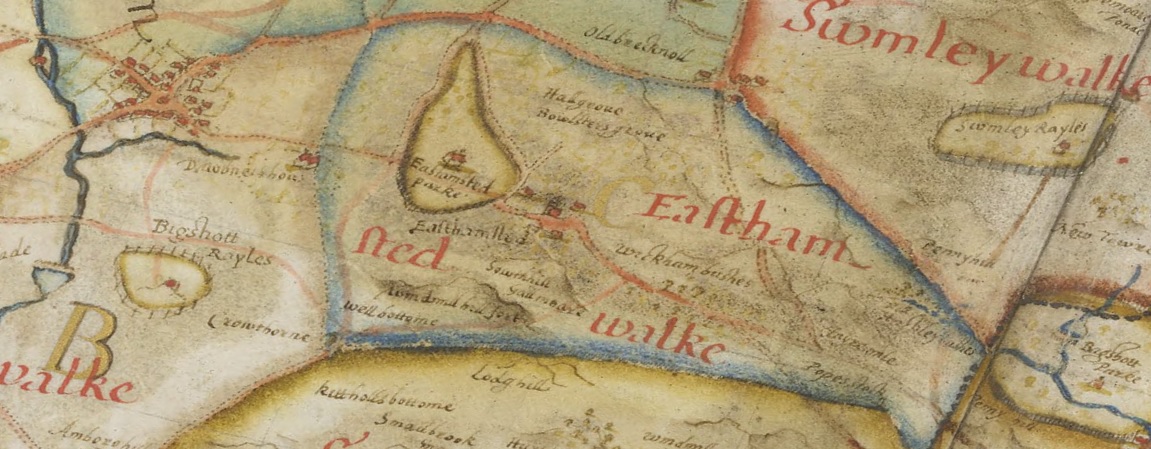
(Map by John Norden in 1607)
"A Christian presence in the community for over 900 years."
The story of our past
Timeline
The Church in Easthampstead has a very long history. Below are some of the listed highlights of the history.
12th Century
Easthampstead is recorded in doomsday as land belonging to the abbey of Westminster St. Peter. The history of Westminster says Easthampstead was granted by the first charter of Edward the Confessor.
The earliest reference to the Church in Easthampstead is in 1159AD when Lawrence Abbot of Westminster granted 'the church of Jezhamstede' to Hurley Priory, 'so that they may observe and venerate the Festival of the Blessed Saint Edward the Confessor, who died January 5th, 1066AD'. This earliest mention of a church is supported by an order from Ralph de Arundel, prior of Hurley, in 1176AD, that "Easthampstead Church shall pay a yearly pension of 4s. to Saint Mary, Hurley, for the provision of wax tapers for the 'mass of Our Lady." This payment continued until the Reformation.
The church, then dedicated to St. Mary, not St. Mary Magdalene, was a stone structure, with a square tower.
16th Century
In 1540 the Abbey of Hurley had to surrender to King Henry VIII with the dissolution, and the property of the old priory passed into the hands of Westminster. When Westminster was forced to surrender with the dissolution, Henry VIII gave the manor and the patronage of the church of Easthmapstead to Charles Howard in 1544.
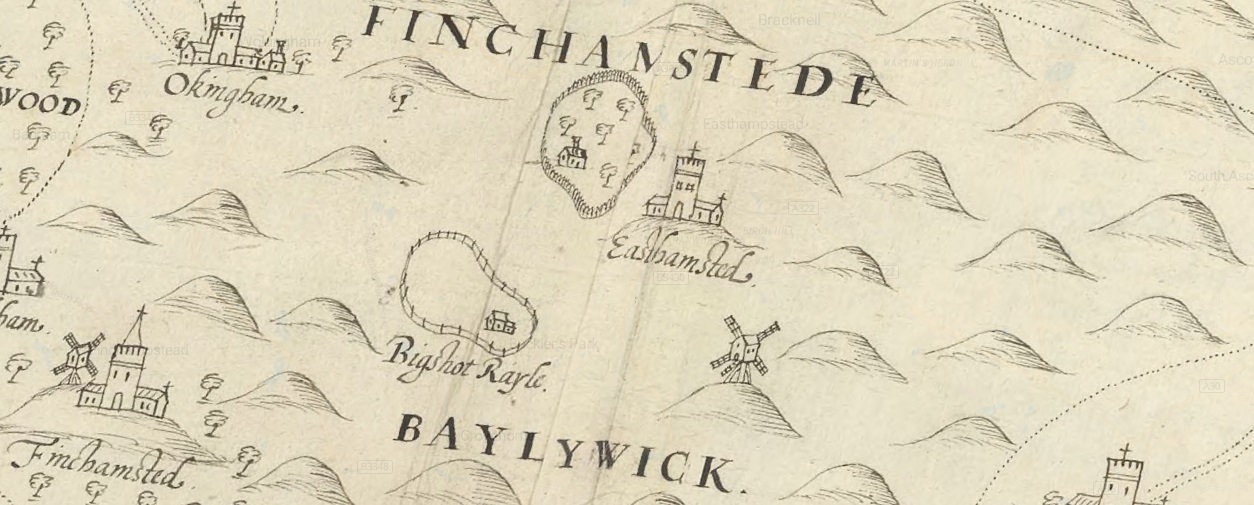
(This map belonged to William Cecil Lord Burghley, Elizabeth I’s Secretary of State.)
17th Century
Sir William Trumbull bought the manor of Easthampstead in 1696 and sold the patronage to Thomas Power. Five years later Power sold it to Christ Church, Oxford, who purchased it out of the 'Fell bequest' to provide livings for needy clerks. They are still patrons to this day.
The first belfry at the Church, that we know of, was built at this time. It was made of wood and was then subsequntly rebuilt in 1664 using bricks. A small nine-inch stone set in the outside wall of the tower commemorates this achievement to this day, with the name Henry Boyer and the year 1664 inscribed on it. Boyer does not seem to have been one of the churchwardens so may have been the benefactor or the parish overseer for the year of the construction. The Church is recorded as having a ring of 4 bells in 1699.
19th Century
At sometime in its history the Church became known as St. Mary Magdalene rather than St Mary. The reason for this is unknown.
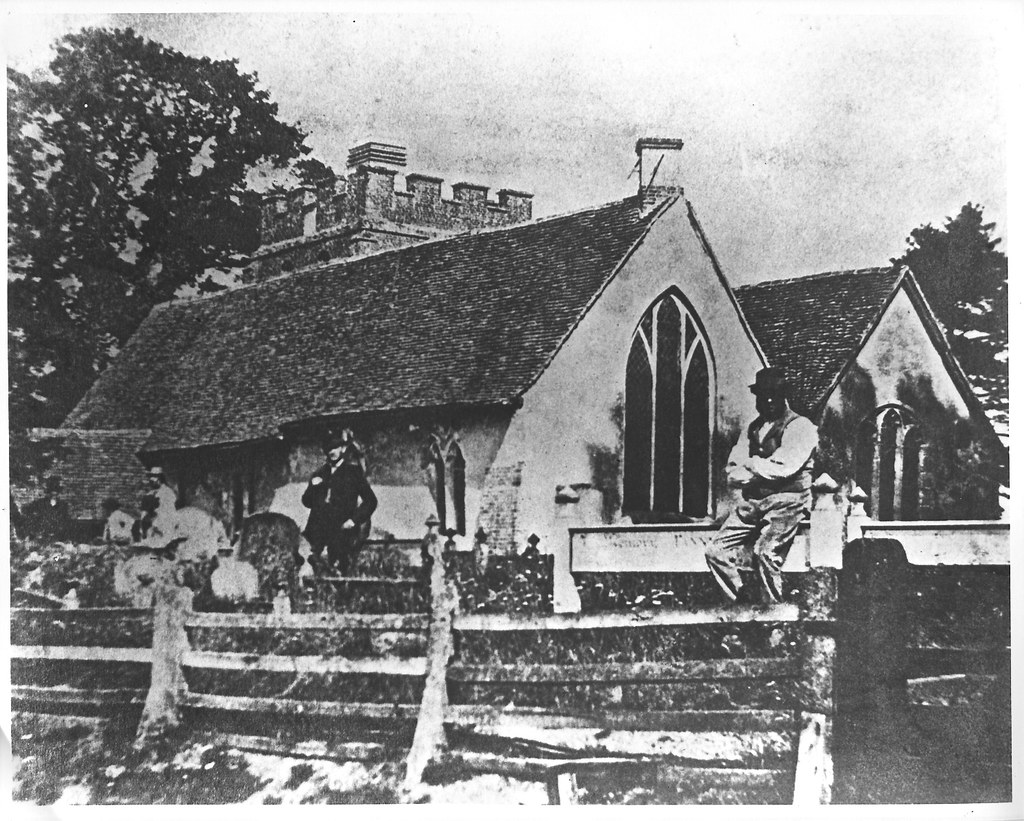
(Taken 1863)
In 1866 the tower was raised to double the height of the 17th century structure. Made of brick, it was decorated and strengthened with ashlar and heavy Victorian stone tracery and surmounted by three narrow little pinnacles and one much larger, to protect the end of the spiral staircase. The bell-loft is large with triple louvred lights on each side, ornately decorated with zigzag patterning. A further tenor and treble were added.
Lady Caroline, Marchioness of Downshire (who resided at Easthampstead Park) and Revd. Osborne Gordon were responsible for the complete rebuilding of the church in 1867, and chose a London architect, J. W. Hugall for the task. He designed a building in the style of Victorian Gothic revival, using stone throughout except for the tower.
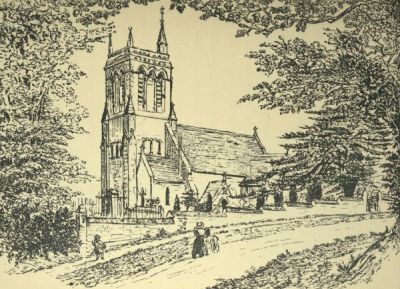
(From the book 'Bygone Berkshire', by P. H. Ditchfield 1896)
When the Church was rebuilt it was dedicated to St. Mary Magdalene and St. Michael. However a few years later the church is referred to, and is to this day as, St. Michael and St. Mary Magdalene. Again no one seems to know why the name was altered for the second time in the history of the Church.
It is now a large building of ashlar stone, except for the lower part of the tower. It consists of a chancel, south-east vestry and organ chamber, nave, south transept, north aisle, south porch, south-west baptistery and north-west tower.
20th Century
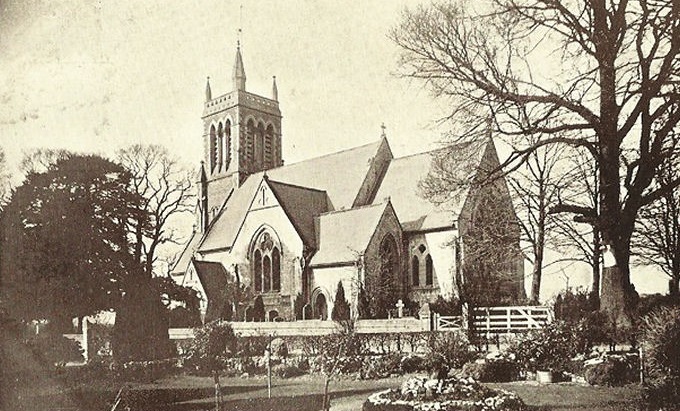
(Taken 1901)
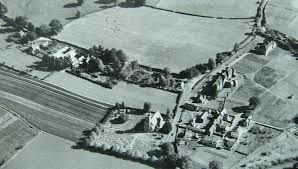
(Taken c.1950)

(Taken 1960)
With the construction of the 'new town' the area around the church became more developed. The parish constructed first the Parish Centre and then the annexe to the Church.
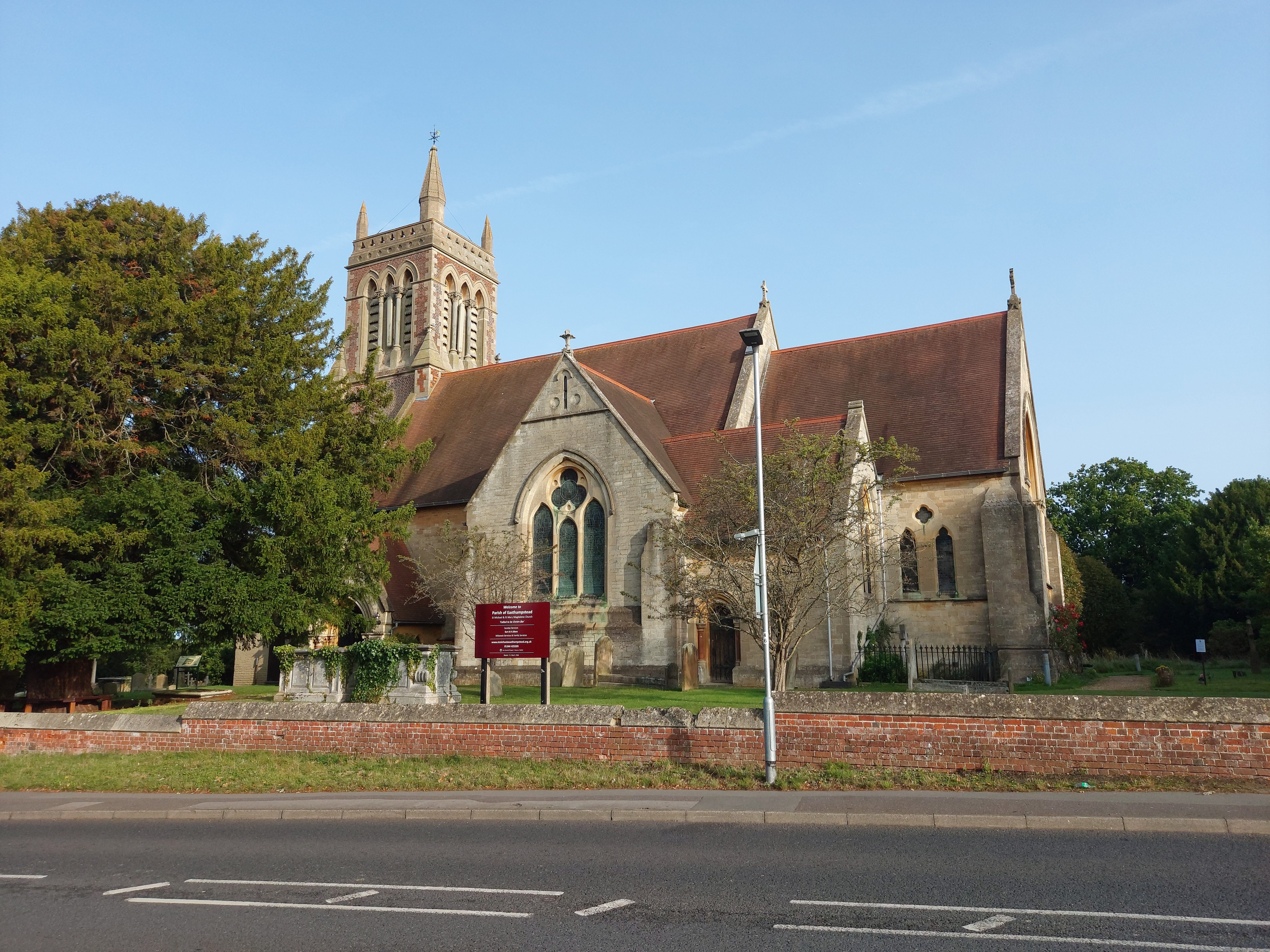
(Taken 2024)
For more information on our history, please do get in touch.
Several notable pieces of ancient church furniture have been preserved. The original plain stone font was given a modern base and placed in the enlarged south aisle baptistry. Portions of the 15th Century rood screen were incorporated in a screen below the Organ. The pulpit is a combination of Victorian woodwork and recovered wood from the old Jacobean pulpit. Below are some of the listed highlights of the interior.

(Taken 1901)
Font
The font, which is that of the former church, has a plain octagonal bowl on a victorian base. It is medieval in origin and is believed to date to the foundation of the church over 900 years ago. This makes it the oldest object in Bracknell that is still in use. Its wooden lid is carved with symbols of the Christian faith. Many families have their own history connected to the history of this place. Baptism registers dating back to 1558AD can be located in the records office.
Screen
The screen below the organ, facing the transept, appears to have been made up from the former rood screen, with 15th-century tracery below and 14th-century tracery above. There are also two shortened buttressed muntins and four pieces of 17th-century pierced ornament are placed above the screen. On the north side towards the chancel are four similar traceried heads.
Pulpit
The pulpit is made up of 17th-century woodwork; a panel on the north face has the following inscription: '1631, Unto this place a zeale I beare, to the widdows mit I may cumpear per me William Aylward.' It is not known who William Aylward was. The origional pulpit was a much larger octagonal pulpit which can be seen on a painting of the church from that time.
Monuments
Many slabs and monuments have been preserved from the former church;
- On the east wall of the nave is a small brass with the half-length figure of a man in a loose cloak belted at the waist, to Thomas Berwyk, who died in 1443.
- The oldest slab is to Edmund Thorold, who died in 1646.
- On the north wall is a marble slab to Elijah Fenton, the poet, of Shelton, Staffordshire, who died in 1730; on it is the following epitaph composed by Alexander Pope: 'This modest stone, what few vain marbles can, May truly say, Here lies an honest man, A poet, blessed beyond the poet's fate, Whom Heaven kept sacred from the proud and great, Foe to loud praise and friend to learned ease, Content with Science in the Vale of Peace, Calmly he looked on either life, and here Saw nothing to regret or there to fear; From Nature's temp' rate feast rose satisfied, Thanked Heaven that he had lived, and that he died.'
- There is a memorial to William Trumbull who died in 1687 and was 'Ambassador from the Kinge of Great Brittaine to Constantinople'.
There are other memorials to the Trumbull and Downshire families, to Revd Osborne Gordon (with a poem by John Ruskin as the epitaph), and a monument to the polar explorer Frederick George Jackson.
Tower and Bells
In the tower walling is reset a small stone inscribed 'Henry Boyer 1664.' The construction of the lower part of the tower dates from around that time. In 1699 the tower had 4 bells with two more added in the early 19th Century. In 1866 the tower was raised to double the height and decorated with victorian stone tracery. Today Easthampstead has 8 cast iron bells all dated to 1966 by the founder Mears & Stainbank. The cast iron frames were made by the Whitechapel Bell Foundry.
For more information, please do get in touch.
There is no record of incumbents until 1298. The current list is as follows (reigning Monarchs are listed in red for reference only):
In the church are five windows made by renowned Victorian artist-craftsman William Morris to the designs of Sir Edward Burne-Jones.
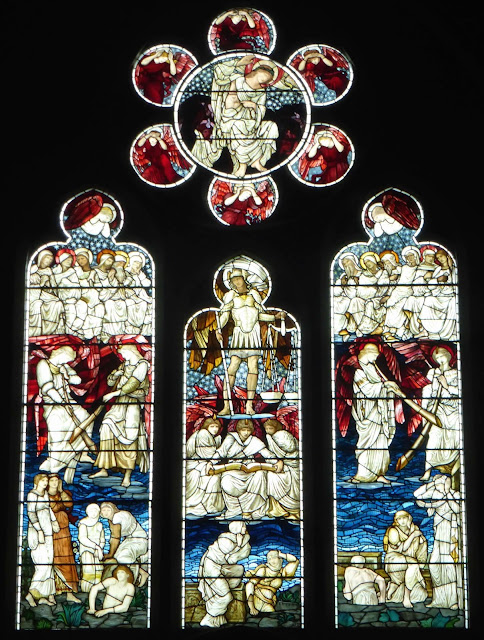
The East Window (shown above) depicts the last judgement and is of national importance. Dating from 1876 it is dedicated to the memory of the 5th Marquis of Downshire and was comissioned by his wife Georgina Hill.
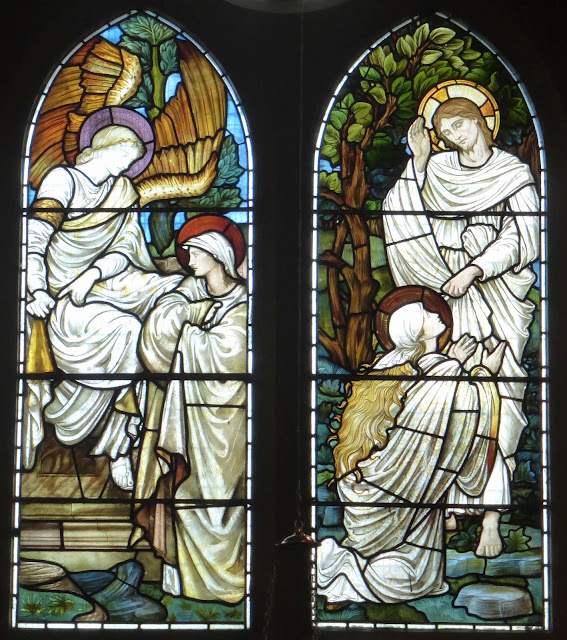
In the North chapel is the scene of St Mary Magdalene at the empty tomb (shown above and to the left) and seeing the risen Christ (shown above and to the right). It is dedicated to the memory of Mr W.J. Scott of Wick Hill House who died in 1875.
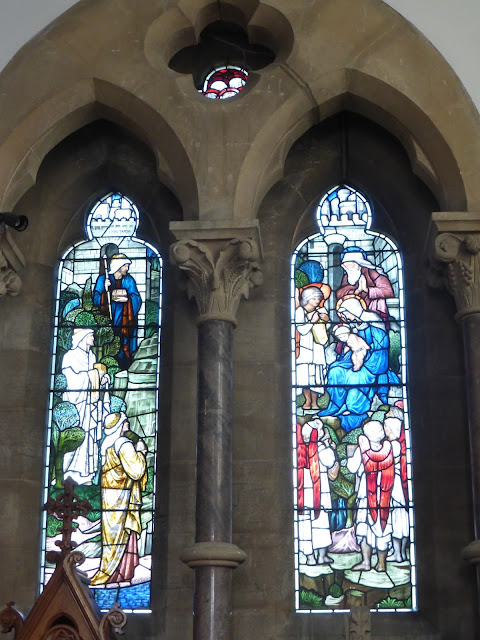
The window showing the coming of the Magi at the north end of the sanctuary (shown above) is dedicated to the memory of Revd. Osborne Gordon who died in 1883.

The fourth window by Burne-Jones dates from 1883 and depicts the Martyrdom of St Maurice (shown above).

The final window made in 1898 showing angels are now situated in the Annexe. Dedicated to the memory of the Peard family. This window reuses earlier designs of Burne-Jones.
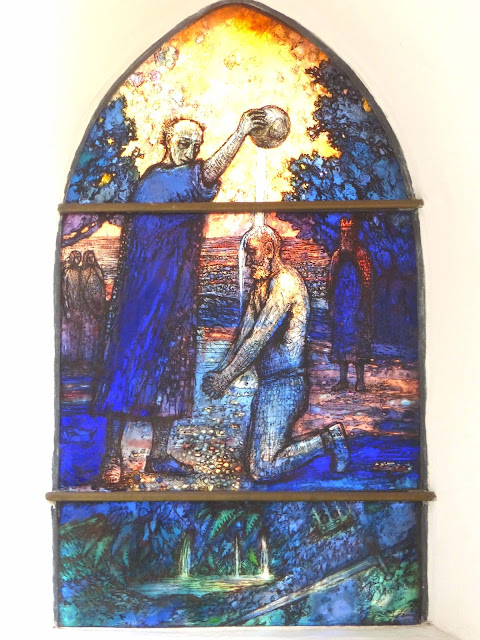
On 9 June 2013, a new stained glass window in the porch, by the artist Thomas Denny, was unveiled by John Nike OBE DL. The window depicts Cynegils King of Wessex's baptism, witnessed by King Oswald of Northumbria and two of the daughters of Cynegils. The baptism established Christianity in the Thames Valley and took place in Dorchester-on-Thames. The window marked the 60th anniversary of the coronation of Queen Elizabeth II.
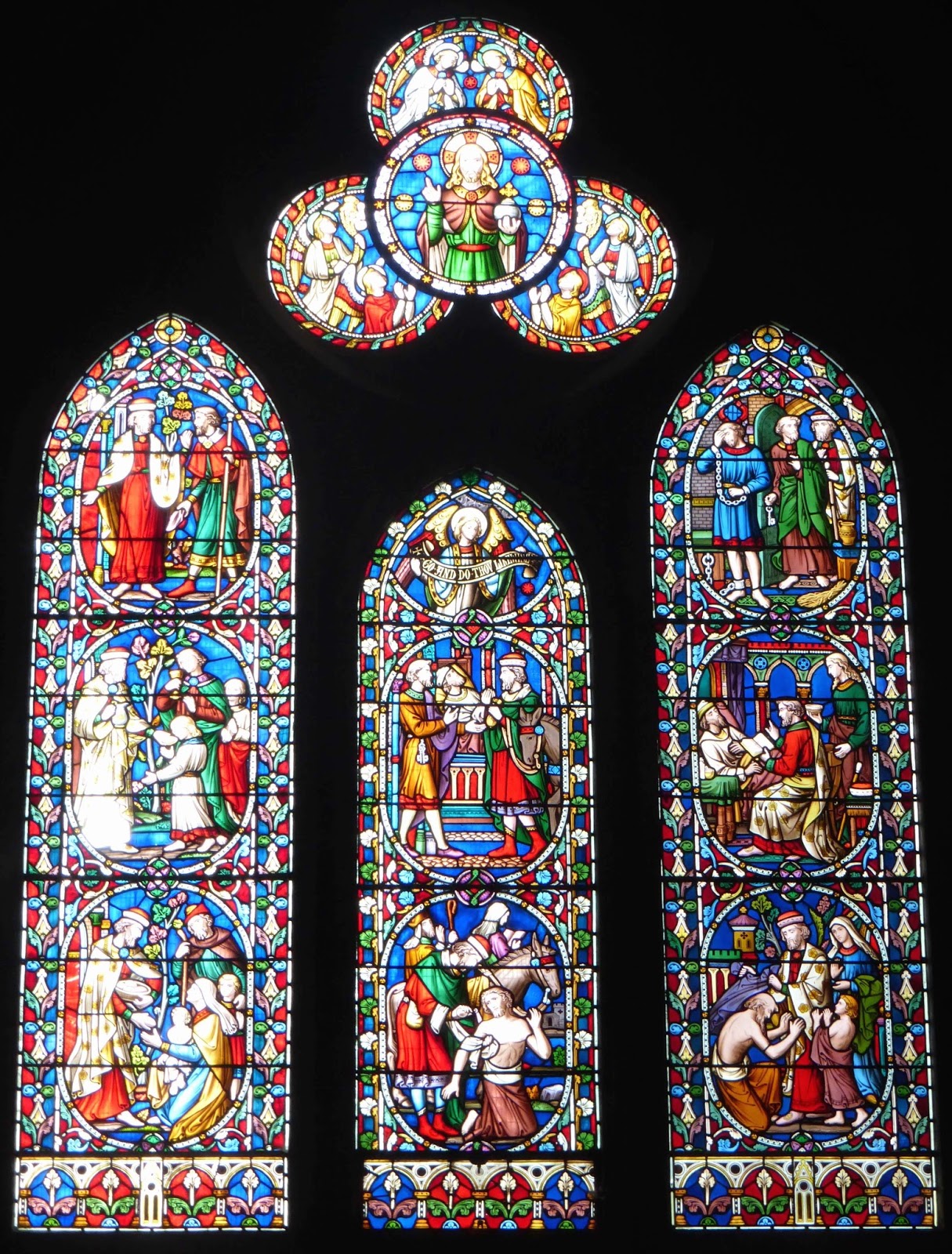
The south window (shown above) in the Downshire chapel is by William Wailes (1808-81), and dates from 1868. It shows the Acts of Charity, based on Jesus' teachings.
For more information, please do get in touch.